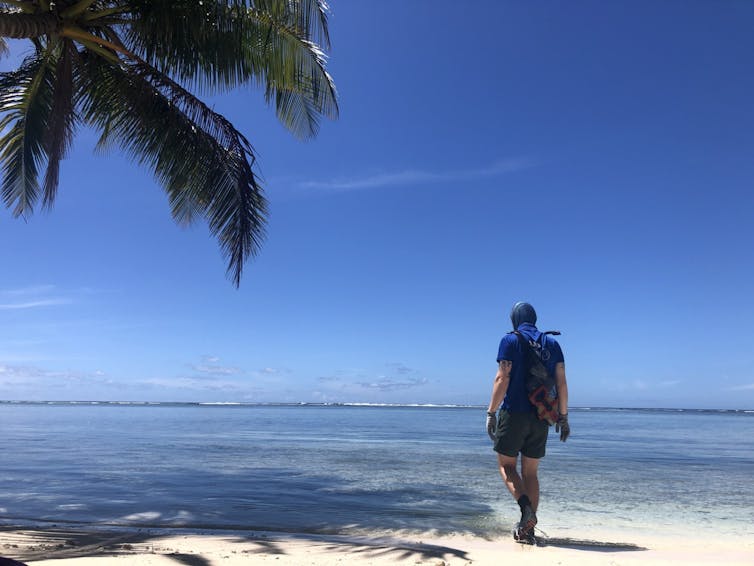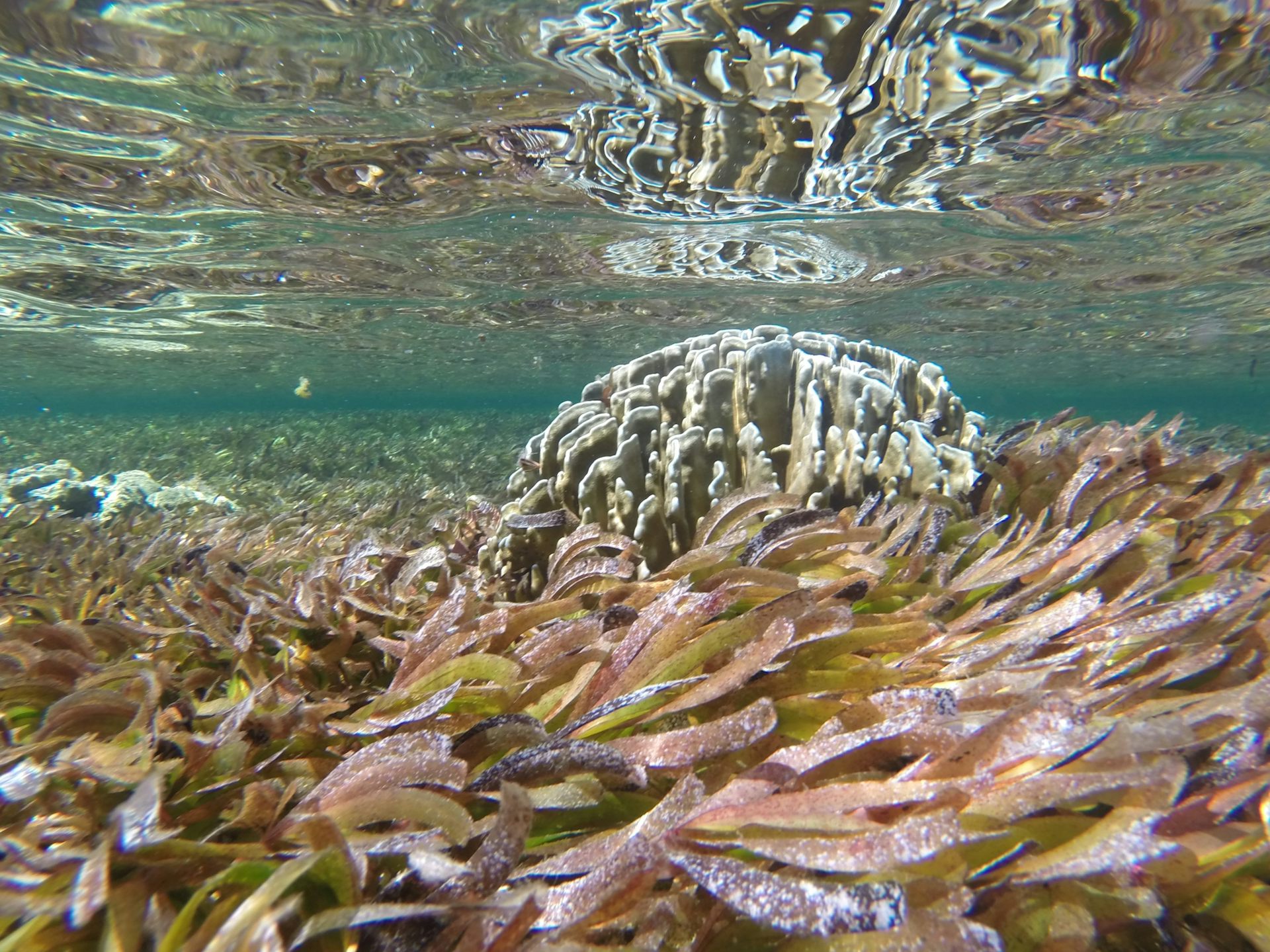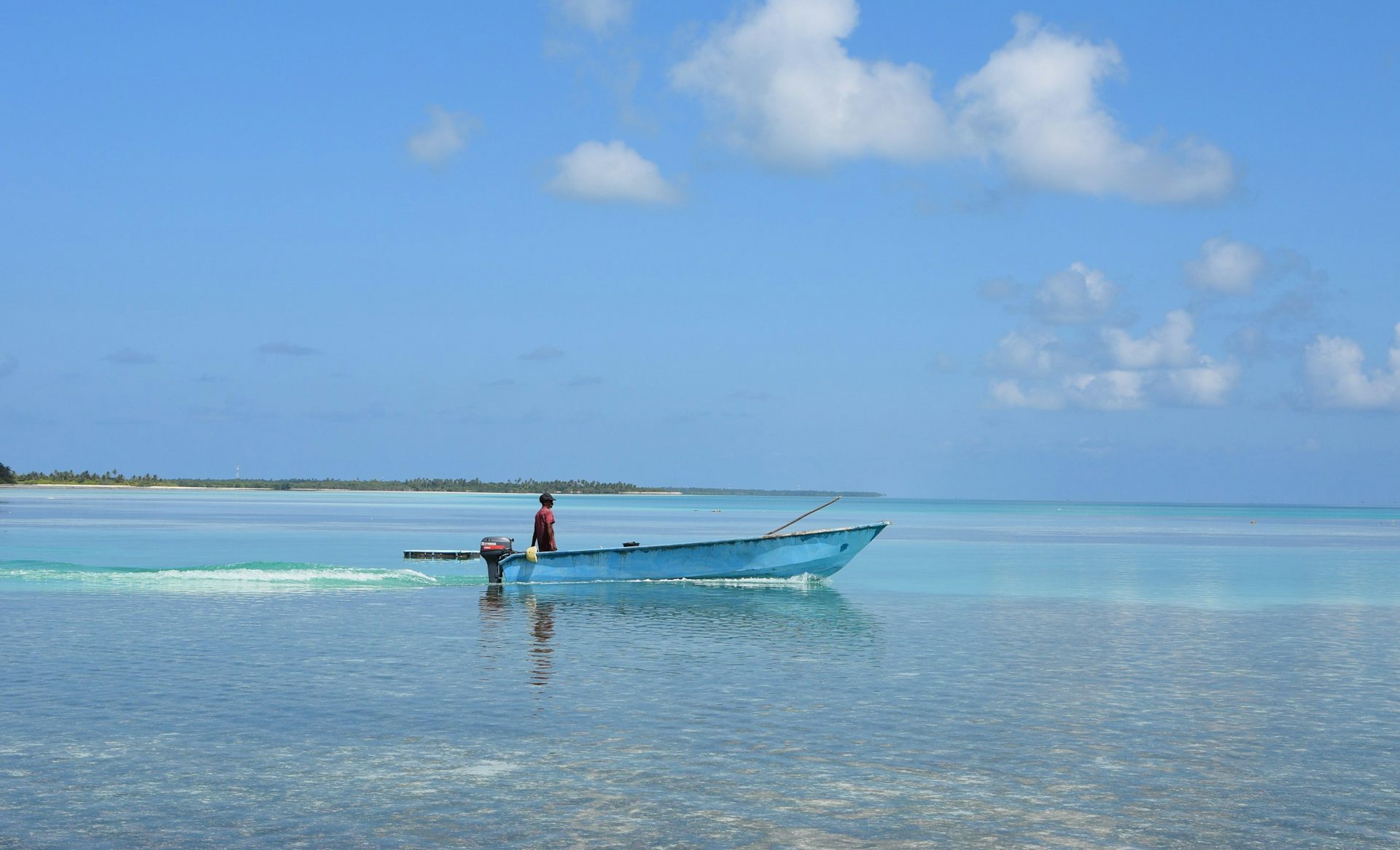Swimming through the crystal clear waters of the Maldives, a nation renowned for its marine life, it could be easy to forget that these delicate ecosystems stand on the frontline of climate change and that seagrass habitats are in crisis globally.
Now, my research, which combined hundreds of hours of fieldwork with thousands of satellite images, has uncovered something unexpected: Maldivian seagrasses have expanded three-fold over the last two decades – and island populations could be playing a part.
I also discovered that seagrass is surprisingly three times more likely to be found next to inhabited islands, rather than uninhabited. So this flowering plant seems to benefit from living in seas close to humans.
Seagrasses grow along coasts all around the world. They can help guard against climate change yet they are frequently underappreciated. In the Maldives, seagrass meadows are dug up to maintain the iconic white beaches that are a frequent feature of honeymoon photos.

Matthew Floyd has spent more than three years studying the drivers of seagrass habitat expansion in the Maldives. Matthew Floyd, CC BY-ND
Important marine habitats have declined in the Maldives. Amid this backdrop of environmental uncertainty, I have spent more than three years studying seagrasses here alongside a team of scientists. We found that seagrasses are faring remarkably well and one of the most plausible drivers could be the supply of nutrients from densely populated areas, such as tourist resorts.
Every day, human activities could provide valuable nutrients for seagrass habitats in an otherwise nutrient limited environment. Food waste is traditionally discarded into the sea from the beach and rain can wash excess fertilisers from farmland into the ocean. As human populations and fertiliser use have both increased, we suspect that seagrass meadows have started to thrive and expand as a result of this increased nutrient supply.
Additionally, building work around islands may create more suitable habitats for seagrass. Land reclamation is widespread across the country as the population has expanded by 474% since 1960.
During this development, sand is dug up from the seabed and some inevitably spills into the water. The structure of seagrass meadows can slow down local water currents, promoting suspended sand grains to sink and creating more sediment for future generations of seagrass to grow into.
Currently, nutrient inputs seem to be creating just the right conditions for seagrasses. But if nutrients continue to increase, there is a risk that the seagrasses will be outcompeted by seaweeds and smothered. Continued land reclamation works that disregard seagrass may also remove this important habitat. So the future of this Maldivian success story may therefore largely lie in our hands.
Seagrass habitats are expanding in some areas, to the surprise of researchers. Matthew Floyd, CC BY-ND
The ecotourism paradox
Although seagrass removal has done little to curb habitat expansion, it highlights a troubled relationship with the tourism industry upon which so many jobs in the Maldives depend. Because it can ultimately make water depths shallower, seagrass can limit boat access and mooring, and therefore interfere with daily life. The proliferation of seagrass in areas of domestic refuse has understandably damaged its image in the eyes of the public.
But, by making coastal waters shallower, seagrasses reinforce coastal protection. And by growing close to refuse sites, they absorb excess nutrients and clean the water of pathogens. Despite being a vital tool in the fight against climate change, seagrass clearly has an image problem on the islands.
Seagrasses can make water more shallow, interfering with boat access and mooring. Matthew Floyd, CC BY-ND
As a marine ecologist, I firmly believe that conservation scientists – and ecotourists – have an important role to play in conveying the value of seagrasses. Conservationists must also fully appreciate the challenges that meadow expansion can bring to local communities, and understand how the needs of conservation and tourism may differ.
There is hope. A campaign called #ProtectMaldivesSeagrass, recently launched by Blue Marine Foundation and Maldives Underwater Initiative, led to 37 resorts (out of a total of 168) pledging to protect their seagrass meadows. Additionally, the data from my research can be used to protect seagrass habitats and quantify their value to people and nature.
Hopefully, the unexpected – yet welcome – success of seagrass in the Maldives is a cause for conservation optimism. And perhaps tourist resorts can learn to love their newly expanding neighbours.
![]()
This article is republished from The Conversation under a Creative Commons license. Read the original article.







